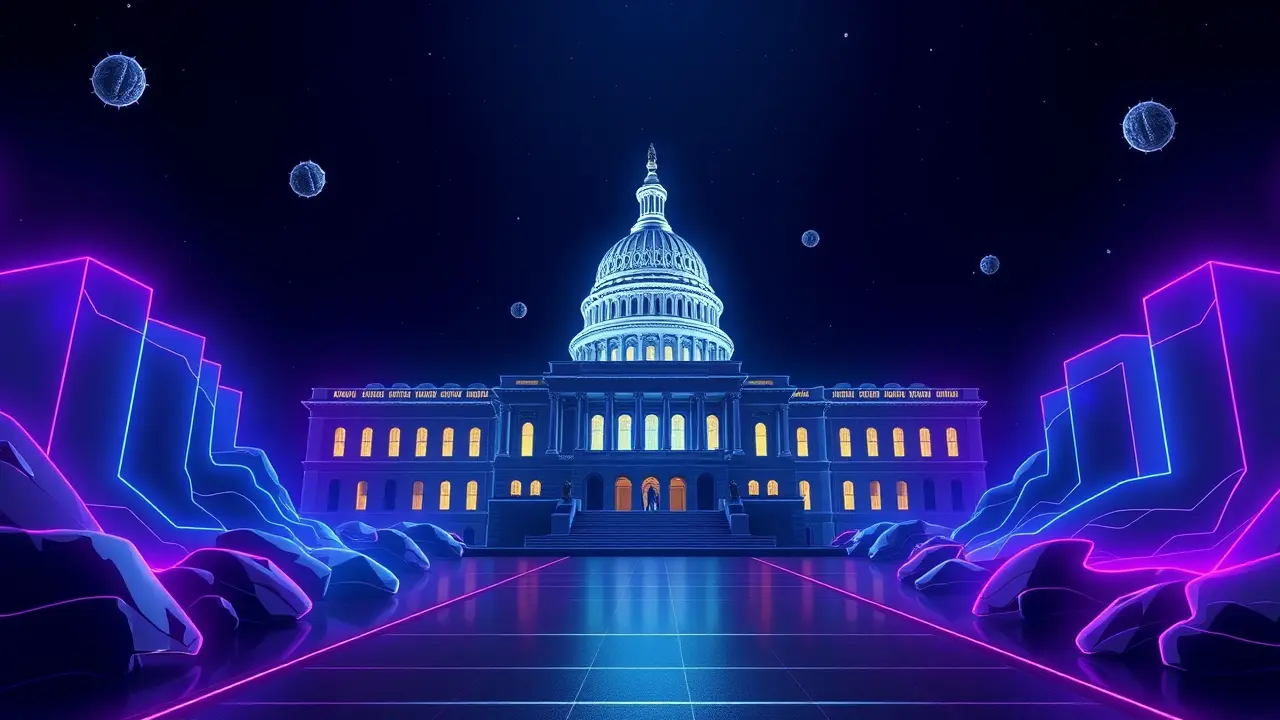
PoliticslegislationNew Bills and Laws
US Lawmakers Introduce Bipartisan Stablecoin Regulation Bill
CH
Chloe Evans
3 weeks ago7 min read
In a move that could finally bring the Wild West of digital dollars to heel, a rare bipartisan coalition of US lawmakers has put forward a landmark bill to regulate stablecoins, those crypto tokens pegged to traditional assets like the US dollar. This isn't just another piece of proposed legislation lost in the congressional docket; it's a potential tectonic shift for the entire financial landscape, a deliberate attempt to build a bridge between the anarchic spirit of decentralized finance (DeFi) and the iron-clad rules of TradFi.For years, stablecoins have existed in a regulatory purgatory, their explosive growth—now boasting a collective market cap in the hundreds of billions—far outpacing any coherent framework to govern them. This vacuum of oversight was terrifyingly exposed by the catastrophic collapse of Terra's UST algorithmic stablecoin in 2022, an event that vaporized nearly $40 billion in market value almost overnight and sent shockwaves through both crypto and traditional markets, serving as a stark warning to regulators who had been content to watch from the sidelines.The new bill, spearheaded by key figures from both sides of the aisle, aims to decisively end that era of ambiguity by squarely placing federal and state regulators in the driver's seat. The proposed framework would grant state regulators the primary authority to issue licenses for non-bank stablecoin issuers, a nod to the existing state-level money transmitter laws, while simultaneously empowering the Federal Reserve to set and enforce crucial prudential standards for these entities, creating a dual-layer system of oversight.Crucially, the legislation mandates that all payment stablecoins must be backed one-to-one by high-quality, liquid assets, predominantly US dollars and short-duration US Treasury bills, held in segregated, bankruptcy-remote accounts—a direct regulatory response to the opaque and often reckless reserve practices that doomed projects like Terra. Furthermore, it explicitly bans the creation of unbacked, algorithmic stablecoins, drawing a clear line in the sand against the kind of financial engineering that proved so systemically dangerous.For the crypto industry, this represents a double-edged sword. On one hand, clear rules provide the legitimacy and 'regulatory moat' that institutions like BlackRock and Fidelity have been waiting for before diving in deeper, potentially unlocking a new wave of institutional capital and paving the way for stablecoins to be seamlessly integrated into payment systems and capital markets.Imagine a future where you can get a mortgage denominated in a digitally-native dollar or where cross-border settlements happen in minutes for pennies, all built on a regulated stablecoin infrastructure. On the other hand, the bill's stringent requirements could squeeze out smaller, innovative players who lack the capital reserves to comply, potentially consolidating the market around a few large, bank-like issuers such as Circle (USDC) and Tether (USDT), whose operations would be subject to intense federal scrutiny.The implications ripple far beyond US borders. A robust US regulatory framework would instantly become the de facto global standard, forcing other nations to either align their own rules or risk their financial ecosystems becoming isolated.It puts immense pressure on the European Union, which is already implementing its own Markets in Crypto-Assets (MiCA) regulation, and on financial hubs like Singapore and the UK to ensure their regimes are interoperable. For global finance, this is a pivotal moment.The US dollar's dominance as the world's reserve currency is now being projected into the digital realm, with regulated dollar-pegged stablecoins poised to become the fundamental plumbing for the next generation of the internet's economy. The passage of this bill is by no means guaranteed—it must still navigate the treacherous waters of congressional politics and intense lobbying from both traditional finance and the crypto sector—but its very introduction signals that the era of asking for permission later is over. The future of money is being written in code, and Washington is finally deciding it needs to proofread the script.
#editorial picks news
#US Congress
#digital assets
#stablecoin regulation
#bipartisan bill
#financial innovation
#payment systems
Stay Informed. Act Smarter.
Get weekly highlights, major headlines, and expert insights — then put your knowledge to work in our live prediction markets.
Related News
Comments
Loading comments...
© 2025 Outpoll Service LTD. All rights reserved.